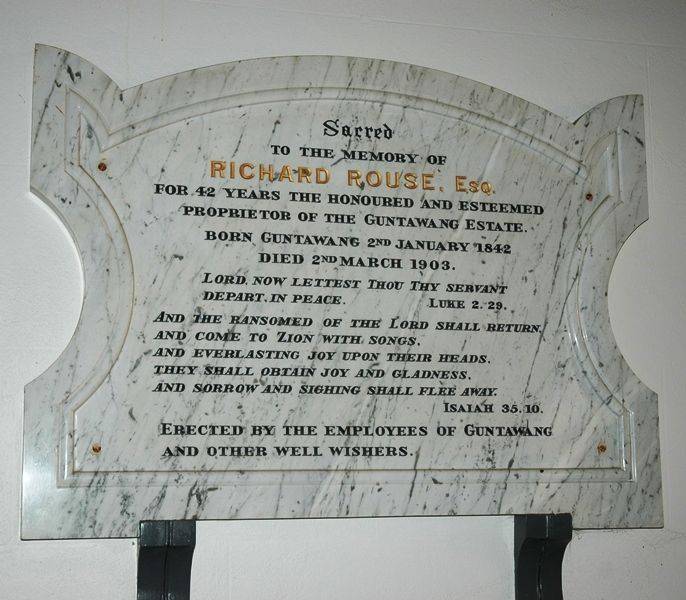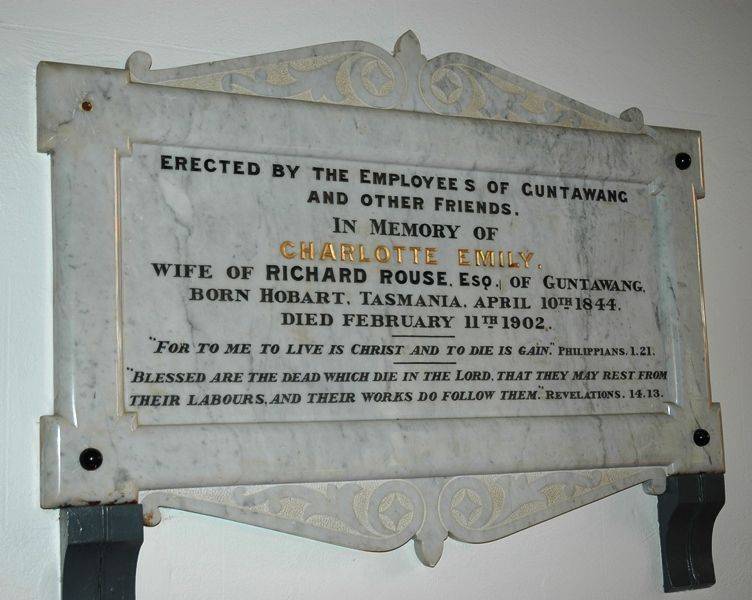Emma Rouse (1843-1928), was the second child of Edwin Rouse (1806-1862) and his wife Hannah Hipkins (1819-1907) and was a granddaughter of Richard and Elizabeth Rouse of Rouse Hill in the Parramatta district of New South Wales.
She was born at the Rouse family property Guntawang near Mudgee but by the time this photograph was taken, probably in late 1855, Edwin and Hannah Rouse and their children had come to live at Rouse Hill, Edwin having taken responsibility for the property following his father's death. In 1871 Emma married Lieutenant Dudley Davison Batty, an English army officer, in London. They had met on board the sailing ship Sobraon in 1869, when Emma and her mother, brother Edwin and sister Lizzie were returning from a European trip and Dudley Batty was making a sea voyage for the sake of his health.

watercolour
family groups
Rouse, Edwin Stephen, 1849-1931.
Rouse, Elizabeth (Lizzie), 1845-1931.
Rouse, Mary Phoebe, 1847-1931.
Rouse, Emma, 1843-1928.
Rouse, Richard, 1842-1903.
Emma Rouse's Beeton's book of household management, 1863. Photo Jacqui Newling © Sydney Living Museums R89/79
Dudley Batty died in 1878 and Emma never returned to Australia. [ref. Caroline Rouse Thornton Rouse Hill house and the Rouses 1988].
Emma Rouse is the mother of Dudley Batty.
We know that Dudley Batty her son was married with Phoebe Mary Vlieland and he toon photographs of Rouse Hill while visiting.
* South Kensington seems to have been the Batty family home – Comeragh Road, where Phoebe and Dudley lived at Aubrey's birth is just round the corner from Redcliffe Gardens, where Dudley's elder sister was stillborn (20 November 1872, Sydney Herald 27 January 1873) and where he and his wife Emma lived on their marriage (20 July 1871) – officiated by Dudley's two brothers, Edmund and George Staunton, both Reverends (Sydney Herald, 2 October 1871)!
Source: Rouse Hill House & Farm ; R86/513-4
MARRIAGES. On July 20, at St. John's Church, Fulham, by the Right Rev. the Lord Bishop of Sydney, assisted by the Rev. Edmund Batty,
vicar, and the Rev. George Staunton Batty, brothers of the
bridegroom, DUDLEY BATTY, Esq., Lieutenant unattached late
66th and 67th Regiments, to EMMA, eldest daughter of the lateFix this text
EDWIN ROUSE, Esq., of Rouse Hall, Australia.


This carte-de-visite is one item within a small album containing photographs of members of the extended Rouse and Terry families.Emma Rouse (1843-1928), was the second child of Edwin Rouse (1806-1862) and his wife Hannah Terry Hipkins (1819-1907) and was a granddaughter of Richard and Elizabeth Rouse of Rouse Hill in the Parramatta district of New South Wales. She was born at the Rouse family property Guntawang near Mudgee but at the time this photograph was taken she was living with her siblings and widowed mother at Rouse Hill. This carte-de-visite portrait seems to be one of a suite of four studio portraits of Edwin and Hannah's children taken at a single session. In 1871 Emma married Lieutenant Dudley Batty, an English army officer, in London. They had met on board the sailing ship Sobraon in 1869, when Emma and her mother, brother Edwin and sister Lizzie were returning from a European trip and Dudley Batty was making a sea voyage for the sake of his health. Dudley Batty died in 1878 and Emma never returned to Australia. [ref. Caroline Rouse Thornton Rouse Hill house and the Rouses 1988].
Source:
Rouse Hill House & Farm ; HR88/18-17. The Hamilton Rouse Hill Trust Collection.
Rights:
You may save or print this image for research and study. If you wish to use it for any other purposes, you must contact the Historic Houses Trust to request permission.
Material Type:
Picture
Record number:
46284






































